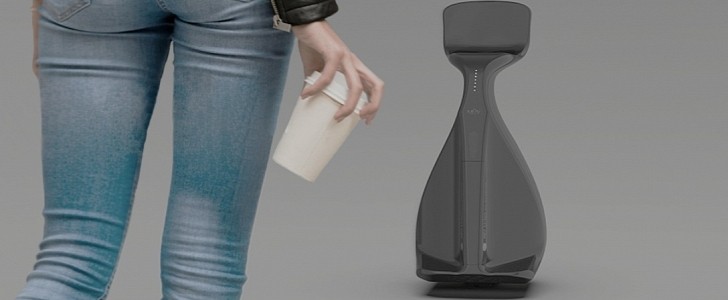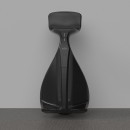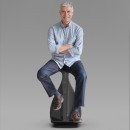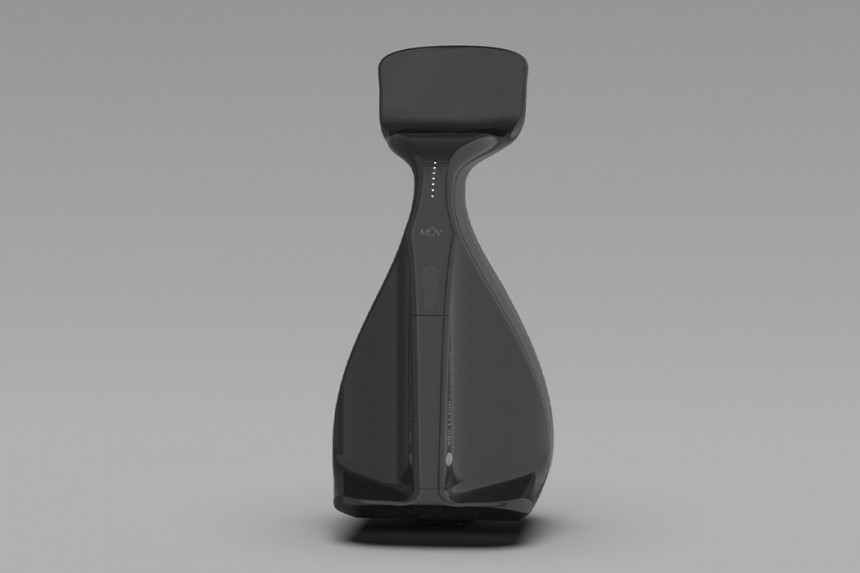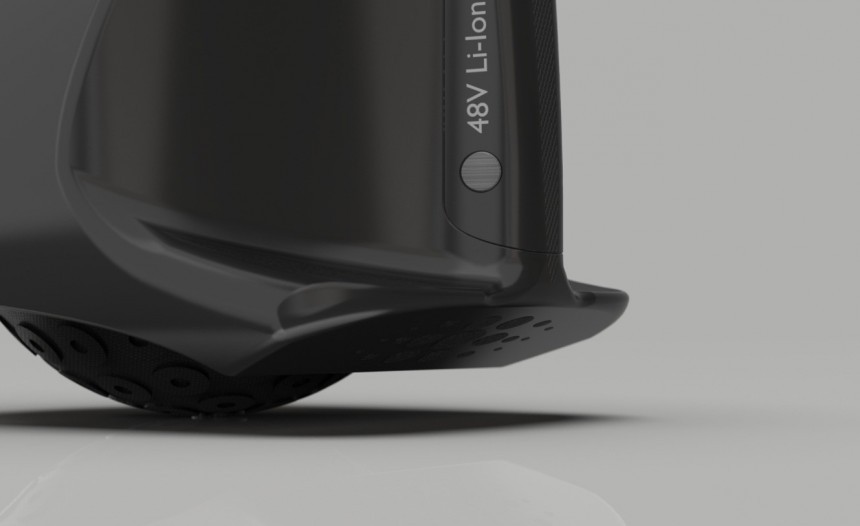Now, we have another newcomer up at bat. An industrial designer by the name or alias of Neutron Her is bringing us a mobility device that was simply bound to happen sooner or later.
Lately, urban mobility has been the point of focus for many manufacturers. Some, giants of the mobility game, others, newcomers with big dreams. Among the giants to bring us mobility solutions have been Bosch, Volkswagen, and even GM with the Puma. And some of the little guys have been Christopher Hoffmann with the Ryno and Barbara Alinker with, well, the Alinker.
What we are looking at isn’t just some postmodern design for a bar stool, it's a mobility device for a future that hasn’t happened yet. She’s called Muv (pronounced ‘move’) and offers assisted mobility unlike any other device around.
Like all good things in this life, this too is simple. It’s this simplicity that gives the Muv her allure. Let’s take this journey from the top down. What we see on the upper half of the device is nothing more than a seat. Like one of those Ikea seats with half the back missing. You know, the uncomfortable ones. But this design does have a purpose.
Because the Muv is a self-balancing vehicle, it uses the rider's own body movements to steer, stop, go, and turn. This mechanism is very similar to that used in Segway products, in that the body is used to operate the maneuverable abilities. This is also why we see no components that would normally be used in steering.
Unlike any other mobility devices around, this one is also completely electric. A 48V lithium ion battery pack sits right between the rider's legs and can be easily removed if needed. But seeing as how the Muv also includes a wireless charging function, there’s really no need to remove the battery unless it needs to be replaced, or you’re short on time and need to quickly replace with a fully charged battery.
Right underneath the battery there is a pad. This pad, right underneath the footrests, is how the EV is charged. All you have to do is tilt it forward to activate the charge function. But here’s the catch, the Muv requires a charging station or dock. If this doesn’t exist, then there is no way to charge her, and you can't just use any random charging device, it has to be a Muv charger.
The final most important system within the device is the way it moves. Now, we know that tilting is used to get the Muv to move, but what is moving?
Traditional mobility design is still widely focused on the use of the wheel as the desired shape for functionality. The Muv is different in that is uses no wheels, but rather a sphere used to maneuver in any direction when needed. Remember those old-school computer mice, the ones with the gray ball at the bottom? That’s exactly how this device works. Motors are to spin the globe to offer maneuverability in any direction as quickly as possible.
She may seem like a far-fetched design, but this sort of spherical drivetrain is a system that has been researched and even put in application in certain sectors in our lives. I feel it’s only a matter of a few years before we start seeing this sort of steering system on more than just concept designs.
What we are looking at isn’t just some postmodern design for a bar stool, it's a mobility device for a future that hasn’t happened yet. She’s called Muv (pronounced ‘move’) and offers assisted mobility unlike any other device around.
Like all good things in this life, this too is simple. It’s this simplicity that gives the Muv her allure. Let’s take this journey from the top down. What we see on the upper half of the device is nothing more than a seat. Like one of those Ikea seats with half the back missing. You know, the uncomfortable ones. But this design does have a purpose.
Unlike any other mobility devices around, this one is also completely electric. A 48V lithium ion battery pack sits right between the rider's legs and can be easily removed if needed. But seeing as how the Muv also includes a wireless charging function, there’s really no need to remove the battery unless it needs to be replaced, or you’re short on time and need to quickly replace with a fully charged battery.
Right underneath the battery there is a pad. This pad, right underneath the footrests, is how the EV is charged. All you have to do is tilt it forward to activate the charge function. But here’s the catch, the Muv requires a charging station or dock. If this doesn’t exist, then there is no way to charge her, and you can't just use any random charging device, it has to be a Muv charger.
Traditional mobility design is still widely focused on the use of the wheel as the desired shape for functionality. The Muv is different in that is uses no wheels, but rather a sphere used to maneuver in any direction when needed. Remember those old-school computer mice, the ones with the gray ball at the bottom? That’s exactly how this device works. Motors are to spin the globe to offer maneuverability in any direction as quickly as possible.
She may seem like a far-fetched design, but this sort of spherical drivetrain is a system that has been researched and even put in application in certain sectors in our lives. I feel it’s only a matter of a few years before we start seeing this sort of steering system on more than just concept designs.
